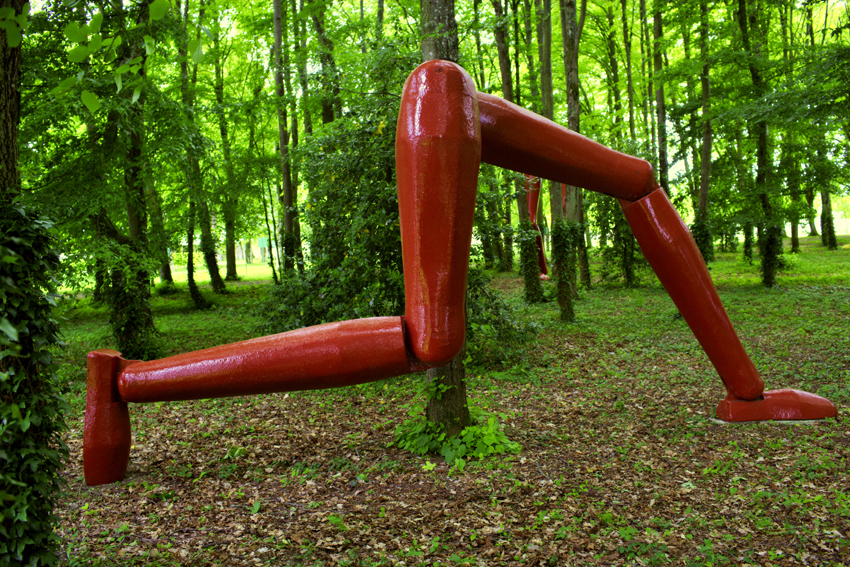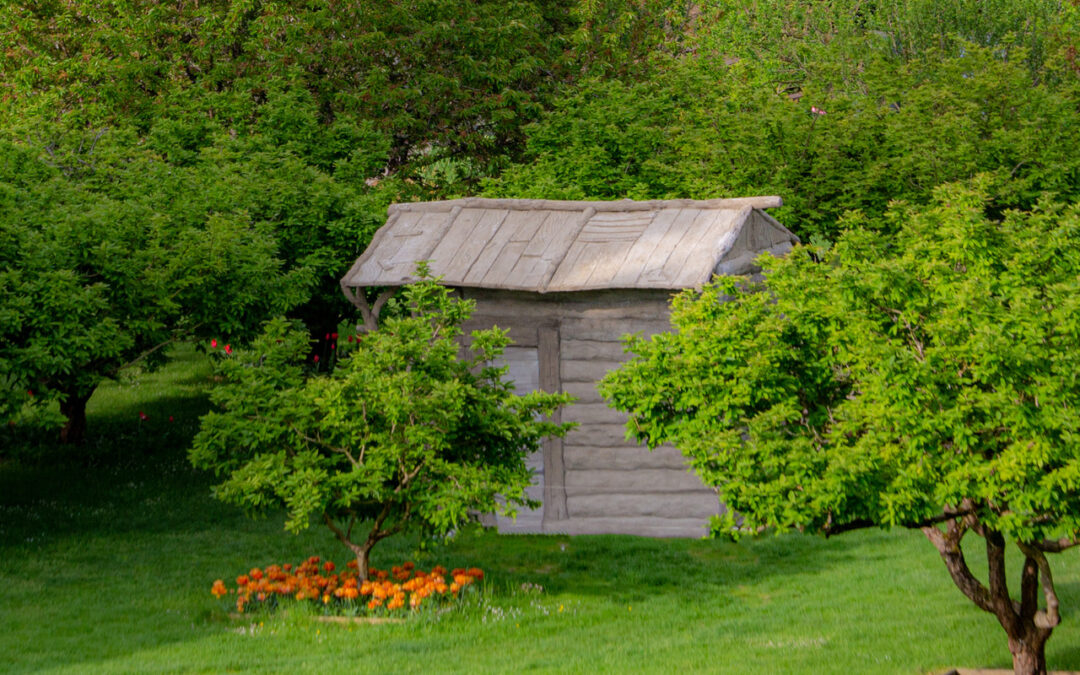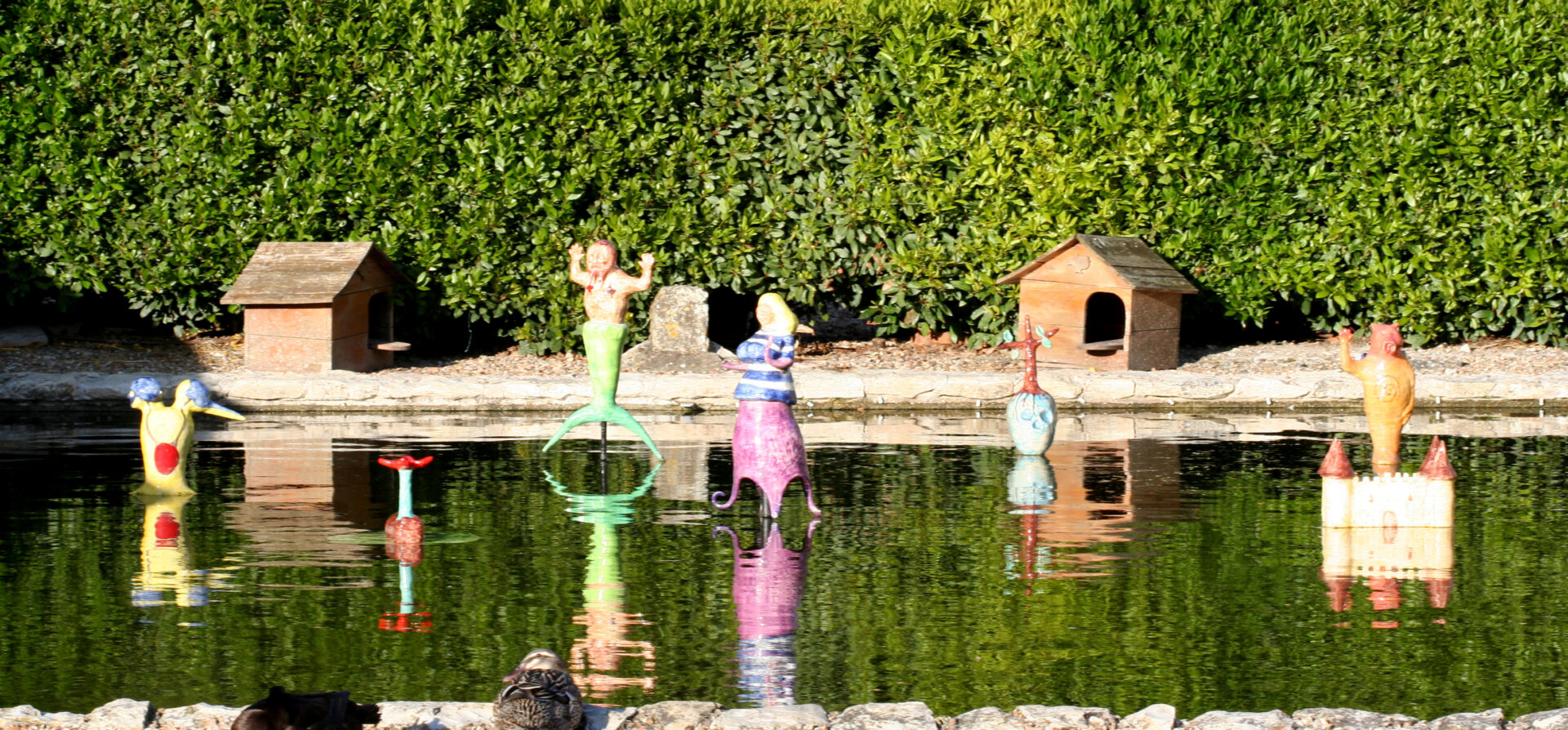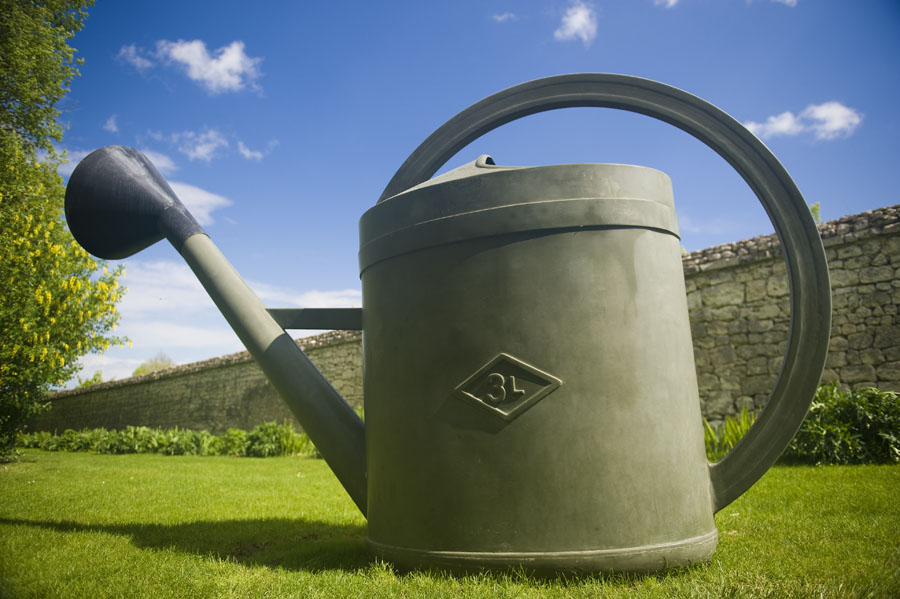Art
SCULPTURE GARDEN
SCULPTURE GARDEN
An art garden with 22 monumental works of art
A veritable open-air museum, the park, designed by Patricia Laigneau since 1995, evokes the medieval parks where surprising sculptures combined courtly love with surprises. Nowadays, the works of renowned contemporary artists call out to visitors at every turn along the way. The sense of wonder, an ingredient of medieval parks, has been revisited, taking on symbols from the imaginary world of tales and legends with irony and poetry.

Two new works of art to enhance the gardens in 2023
The gardens are renowned for their poetry. In front of the plant occulus and its remarkable view of the Château du Rivau, Le Kiss, two sculptures evoking kissing and love created by artist Laurent Pernot, complete this dreamlike escape.
A rock garden hut in the Paradis orchard! Rocaille, the art form in vogue in historic gardens in the 19th century, inspired artist Julien des Monstiers. Like any fairy tale, the wonderful world of Le Rivau had to include a tree house. Remember Hansel & Gretel’s magic cabin? The dreamlike atmosphere inspired by an abandoned tree house fades as you approach. One side appears to be a container! Julien des Monstiers blurs the boundaries between two imaginary worlds: the fairy tale and the real world, with its containers carrying manufactured goods synonymous with globalization, far removed from the artisanal practices of yesteryear.
As the viewer approaches, peepholes in the door reveal the colorful, lyrical frescoes painted by the artist, revealing the beautiful surrounding countryside. The singular technique, in which the painter’s orange and blue colors intermingle, also tells the story inside the cabin of the giant puzzle that is today’s world, where past and modernity are superimposed to the point of annihilation.

An artistic journey
Not far away, Old Woman shoe (2009), the monumental work by artist Amy O’ Neill (on deposit with CNAP as part of its mission to support the visual arts), appeals to young and old alike. Of course, American artist Amy O’ Neil mixes children’s dreams with those of adults, as the little ones can take refuge in this oversized boot, while referring to a famous Anglo-Saxon nursery rhyme in which enchantment spreads thanks to magical objects endowed with prodigious powers.
On the foot bath, contrast the Lilliputian dimensions of Fabien Verschaere’s ceramic installation, Novel for life. A princess, an enchanted castle, a teddy bear, a cuddly duck and even a vanity, hijacked by the artist, interweave children’s dreams with the zany.
Still in the enclosure formerly known as the cour des servitudes, Pierre Ardouvin’s installation Encore et toujours (2009) also offers a new reading of the marvellous. At first glance, an inaccessible merry-go-round symbolizes children’s first enchanted voyage, and the whirlwind caused by this journey. On closer inspection, the artist seems to be telling us that these dreams are shattered in adulthood, as evoked by the broken mirror on the floor of the installation, which reflects the deteriorated image of the castle.

Further into the gardens…
A little further on, Nicole Tran Ba Vang’s Après la pluie (2004) takes up the form and principle of the traditional saké glass, the Japanese men’s cup with an erotic image on the bottom. To the pleasure of surprise is added the notion of voyeurism, as if the forbidden were more attractive.
In the heart of Le Petit Poucet’s garden, the visitor discovers a bronze. Stefan Nikolaev has erected a « Monument » commemorating the coyote from the famous cartoon. With his work I liked America and America liked me (2013), Stefan Nikolaev hijacks the figure of Joseph Beuys, a great German artist always wearing a felt coat and carrying a walking stick. Beuys, a defender of Nature, had locked himself up with a coyote to demonstrate that Nature was not aggressive. Stefan Nikolaev humorously draws an analogy between the artist’s character and the cartoon figure.
In the Enchanted Forest, as visitors look up to the sky, they discover Paul Rouillac’s mobile Les sept nains (2011). The artist makes goblins dance, red with the pleasure of whirling on their mobile above visitors’ heads, at the same height as the birds. The floor features Les grands hommes by artist Claude Le Poète. Behind their naive appearances, these ceramic sculptures ironically represent the heroes of the media : politicians…
Emerging from the forest, Lilian Bourgeat’s Vaisseau de jardin (2006) is intriguing. The artist enjoys enlarging the most banal objects of our daily lives. Promoted to XXL scale, they now emerge from their anonymity to become « Objets Extraordinaires », rather like the magical objects of fairy tales.
Nearby, the Alice au Pays du Rivau labyrinth catches the eye, especially as the 2-D sculptures created by Jean-Jack Martin at the entrance resemble soldier-gardeners. And they project us, like Alice, into a marvellous universe. With modesty and talent, the artist gives shape to the figures inspired by John Tenniel’s original illustrations.

An open-air museum
At a bend in the path, among the tall lime and hornbeam trees, the walker can make out 5 large pairs of legs that seem to be moved by the wind. This is Jérôme Basserode’s La Forêt qui court (1998). Emblematic of the Rivau gardens, this impressive installation raises the question of man’s future in Nature. Or rather, the fate of the forest, often destroyed by man.
On the edge of the forest, overlooking cultivated fields, stands Le nid (1996) by Jean-Luc Bichaud. At first glance, it looks like an ordinary, oversized nest. But lined with millet seeds, the preferred food of caged birds, this shelter takes on another meaning: to protect our rural birds in a landscape that has often lost its hedgerows, refuges of the winged gentry.
Overlooking the forest, walkers are greeted by Philippe Ramette’s Le piercing (2003), adorning the park’s oldest oak. At first glance, a piece of jewelry in a tree may seem absurd, but by some mysterious alchemy, the sculpture and the old tree enhance each other’s beauty.
After these peregrinations towards childhood and the marvelous, visitors to Le Rivau discover Jean-Pierre Raynaud’s monumental Red Pot. Here, the banal pot is magnified by its gigantism and color. And one might ask: why is it concreted́ as if the artist had condemned this pot not to be used as a container for flowers?
At the end of Chemin des Fées stands Dominique Bailly’s La Tour du Bois Dormant. In the shape of the roof of the château’s pepperbox towers, this plant-based work (it’s lined with vine shoots) restores the fourth tower that once closed the château’s quadrangle.
Yet another surprise: when arriving under the châtelet at the entrance to the château, Pierre Ardouvin transforms two banal garden wheelbarrows planted in boots into human figures. In Debout (2005), Pierre Ardouvin transforms utilitarian objects into figures charged with a dual mission, oscillating between the dream and pessimism inherent in the human condition: to greet visitors and to evoke the work required to maintain a monument and its gardens.
